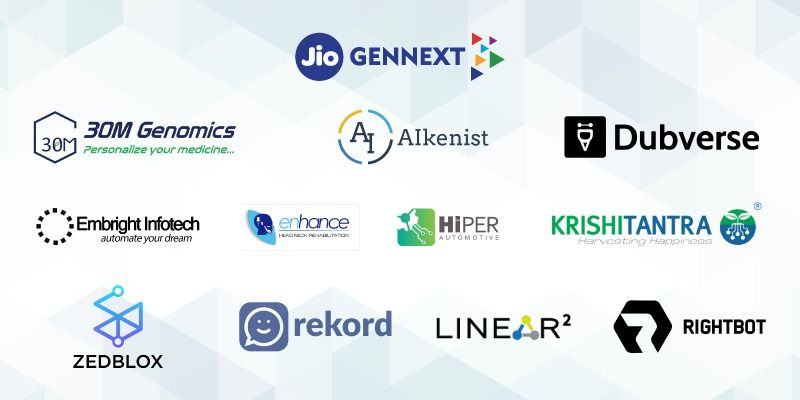Upskilling is the only way to survive layoffs and a shrinking job market
A NASSCOM report says up to 40 percent of the estimated four million workforce in India need re-skilling over the next five years to keep pace with automation and changing skill needs in various industries.
Growing job insecurity among professionals on account of layoffs and a shrinking job market has put the spotlight on skills upgradation this year.
This insecurity is nowhere more evident than in the IT/ITes industry where automation and changing business models have left most professionals worrying about redundancy and survival.
Adding to the overall gloom is the bleak global employment outlook. Hiring prospects across industry is expected to see a slide for the sixth consecutive quarter during July-September.

According to the latest Manpower Report, the intention to hire this year has weakened by 28 percent in service sector, 26 percent in manufacturing sector, 24 percent in finance, insurance and real estate sector, 18 percent in the transportation and utilities sector and by 17 percent in the mining and construction sector.
"With the gloom in the IT industry because of layoffs, professionals do not feel secure about their jobs anymore. This situation however provides a big opportunity for thousands of IT professionals to move out of their comfort zones and up-skill themselves for better roles and salary hikes,” says Krishna Kumar, Chief Executive Officer, Simplilearn, an e-learning platform.
Newer technologies like cloud, big data, analytics, digital marketing, and DevOps, according to Krishna, provide immense opportunities for career growth.
He thinks that professionals trained in technologies such as AWS, Azure, DevOps, JIRA, machine learning, spark and tableau can command higher pay scales with the average salary ranging from Rs 9 lakh to Rs 14 lakh per annum.
Reskilling is the need of the hour!
The stress on automation and adoption of newer technologies over the past two years have made it necessary to invest in up-skilling. This shift is now compelling everyone to take measures to make use of this transformation and up-skill themselves.
A better and positive way of looking at these changes would be to see them as providing newer opportunities since there is now growing demand among the IT giants for professionals skilled in these newer technologies.
A recent NASSCOM report states that up to 40 percent of the estimated four million workforce in India need re-skilling over the next five years to keep pace with automation and changing skill needs in various industries.

An example of a company in India that is at the forefront of re-skilling its employees is AMD, an American multinational semiconductor company.
According to Kiranmai Pendyala, Corporate VP and Chief Operating Officer, HR, AMD India, close to 40 percent of their existing employees undergo reskilling to help them adopt state-of-the-art tools and technologies to design, build, and sell innovative products.
Since India is a R&D hub for AMD, 90 percent of their workforce is made up of engineers, which leads to the constant challenge of finding right talent for niche areas. Therefore, they don’t shy away from investing in equipping employees with future-ready skills to develop next-generation product pipelines.
AMD hosts technical leadership programmes for individual contributors who work on product development and leadership development programmmes for managers who lead and manage projects, says Kiranmai.
Besides, technical conferences like AMD Asia Technical Conference (AATC) and Technical Leadership Seminar (TLS) allow engineers to share ideas, work on technical papers, exchange industry knowledge and foster peer-to-peer learning.
Corporate vice presidents and senior fellows at AMD identify and mentor junior engineers on problem solving, decision making, innovation and patent filing, adds Kiranmai.
Rishabh Kaul, Co-founder of Belong, an enterprise software company in the outbound recruitment and candidate experience space, says,
“We’re witnessing a new tech order today where systems of engagement technologies in the form of IoT and augmented and virtual reality are enabling systems of insight technologies in the form of AI/cognitive and deep learning to drive action for businesses.”
According to him, the number of connected devices is projected to reach 21 billion by 2020.
Belong’s recently launched Talent Supply Index shows that the demand for IoT jobs has grown by 304 percent and while those for data science jobs has grown by 76 percent.
Positive outlook on retail, education
The global employment outlook has a few silver linings though. The Manpower Report sees hiring picking up in July-September in sectors such as wholesale and retail trade, public administration and education, transportation and utilities, and services. The most cautious outlook for Q3 2017 is reported by manufacturing sector employers followed by finance, insurance, real estate, mining, and construction sectors.

“Hiring is primarily driven by sectors such as wholesale and retail trade, transportation, utilities, and services where employer hiring sentiment appears to be better,” said AG Rao, Group Managing Director of ManpowerGroup India.
Globally, the payroll will grow over the next three months with majority of the employers planning to either retain current staff or grow payrolls marginally.
Compared to the previous quarter results, forecasts improve in 17 countries and territories, decline in 16, and remain unchanged in 10. The strongest July-September quarter hiring plans are reported in Japan, Taiwan, Hungary, and the US whereas the weakest forecasts are reported in Italy, the Czech Republic, and Finland.
“In the wake of uncertainties in global markets, employers in India are adopting a wait-and-watch policy. This is probably the reason we are not seeing them commit to the same optimistic hiring plans,” says Rao.











